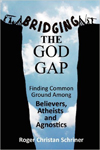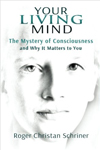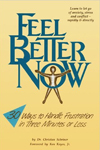I have a rather sentimental feeling toward Do Think Twice: Provocative Reflections on Age-Old Questions. I wrote this book shortly after I began writing full-time, in 2008. Being aware of the passage of time, I called it my bucket list book. I began writing it by assembling all the ideas I wanted to be sure that I put down on paper asap, in case I kicked the old bucket. I self-published it after just one year of intensive work, printing a limited number of copies that I mostly planned to sell after my lectures and workshops. Now I think I’ll put it on Amazon some day, but at present I am the only source for this publication. (Email rcschriner@aol.com; $25 for a signed copy, including tax and postage.)
Because of the nature of this book, its 260 pages contain more ideas per square inch than any of my other releases, and its subject matter is more varied. Here is the Table of Contents, plus excerpts from Chapter One. Passages that are not included below are marked with ellipses: … I have also omitted some footnotes.
CONTENTS
Chapter 1: “Hiding in Plain Sight”
Chapter 2: How To Be a Brain
Chapter 3: Your Mini-Minds:
A Report From Planet Three
Chapter 4: Welcome to Oglaroon:
Knowing What We Do Not Know
Chapter 5: Religion, Revelation, and Biblical Literalism
Chapter 6: A Gospel of Ignorance
Chapter 7: Values Flow from Within
Chapter 8: The Paradoxical Power of Self-Contradiction
Chapter 9: Theism and Atheism: Brothers in Disguise?
Chapter 10: The Loom of Experience
Chapter 11: The Myth of Magical Freedom
The Power of Practical Freedom
Chapter 12: The Art of Letting Go
Chapter 13: Mind-Play
Chapter 14: Graduates of Eden
Chapter 15: A Conceptual Mosaic
The Last Chapter
Traveling Light
Appendix: More on Free Will
Chapter One
“Hiding in Plain Sight”
“I would not give a fig for the simplicity this side of complexity, but I would give my life for the simplicity on the other side of complexity.” – Oliver Wendell Holmes
I have always loved exploring unusual ideas, and one way to discover new ideas is to look at what’s familiar as if for the first time. From our second look comes second thoughts, as we notice what is invisibly obvious, hiding in plain sight.
Naturally I hope some of my favorite “invisibly obvious” ideas will prove useful to others. Do Think Twice: Provocative Reflections on Age-Old Questions is a quick and straightforward way to share what I’ve gathered during a lifetime of curiosity.
Do Think Twice was written for thoughtful readers who still wonder about the big issues that have intrigued philosophers, visionaries, and college sophomores. I have emphasized ideas that are not widely known or that deserve to be known better. Some of these are easily understood, while others are subtle, complex, or just plain confusing. I love the challenge of trying to express complicated ideas simply, without oversimplifying. Like Holmes, I seek the simplicity that lies behind the complexity that lies behind seeming simplicity.
I call this book Do Think Twice because unhurried reflection is so rare and so precious. If we take the time to think things through, new insights will pop up like mushrooms after rainfall. Many of us are so busy that we seldom savor extended contemplation. We bounce from TV to e-mails to Twitter-Tweets without stopping to think twice, or more than twice. It’s refreshing to step off the hamster-wheel of quick and shallow semi-thought.
My background, interests, and biases. I have been interested in religion all my life, beginning with my childhood fascination with the Christian Bible. As an adult, however, I have leaned toward secular humanism, partly because I appreciate the scientific world-view. My vocation has been the Unitarian Universalist ministry. Since Unitarian Universalists range from fairly traditional Christians to dedicated atheists, I have needed to address a wide range of viewpoints. I was also a psychotherapist for about twenty years. I enjoy learning about psychology, consciousness, and neuroscience. And I have always loved philosophy, the disciplined effort to think as clearly as possible about fundamental problems.
Besides valuing clear thought for its own sake, I also like to harvest practical payoffs from abstract ideas. Although this is not a self-improvement manual or a manifesto for social change, I will apply the book’s principles to everyday human concerns. Some passages hark back to themes from my previous books on practical psychology. …
Do Think Twice draws upon various shorter articles and lectures, so it consists of a series of essays. Since I have wide-ranging interests, I expected the book to be something of a hodgepodge. Fortunately, a few common themes help unify its diverse subject matter. Here are three of these unifying motifs:
1. Facing ignorance. I have come to believe that we know a lot less than we think we do. Even though I have been aware of this problem for decades, I still find myself imagining that my picture of reality is only slightly incomplete. I just need to tie up a few loose ends. It would be more accurate to think of my world-view as a 1% completed jigsaw puzzle.
Confronting ignorance may sound threatening, but I have found it liberating. Whenever I have honestly faced the limits of my own knowledge, I have been better off as a result. Because the value of admitting ignorance is not widely recognized, this will be a central theme of Do Think Twice.
2. Traveling light. Since I do not think we have final answers to most theological and philosophical questions, I favor a “minimalist” approach, “traveling light” through life carrying very little belief-system baggage.
It isn’t easy to abandon the search for certainties. We want answers that help us deal with core human challenges – we are small and fragile, lots of bad things happen, and everybody dies. Religion typically tells us that someone wise and wonderful is running the cosmos, goodness will prevail in the end, and death is an illusion. Non-religious philosophies of life may deny all of these doctrines. I hope my minimalist approach will be useful both to those who reject religion and to those who accept it.
First, a word to those who reject religion: I am convinced that we can find fulfillment even if the world is not as we would wish. I say this based partly on my own experience, but especially because of my work as a Unitarian Universalist minister. I have known many UU secular humanists who radiate inner peace. Without relying on religious assurances, they have shown serenity in the face of death and resilience after personal tragedies. We can live with delight and gratitude, regardless of whether we believe in religious teachings.
A minimalist approach may also benefit readers who are deeply religious. Even those with strong religious convictions may go through periods in which they doubt the doctrines of their denomination or even lose their faith entirely. This can cause a profound personal crisis, since faith is usually an important source of emotional support. It is helpful to develop a sort of fall-back position, in case faith falters. That way one can benefit from religious beliefs without entirely depending on them for psychological well-being. One can say, “Yes, I think that God is in charge and all will ultimately be right with the world. But even if that isn’t literally and exactly true, it’s still wonderful to be alive here and now.” This is a sort of Plan A – Plan B approach. “Even if some of my beliefs are incorrect, I can still celebrate life.”
Here are some traditional assurances discussed in this book:
❃ Religious revelations have clued us in on the big picture, showing us what life is all about.
❃ Values are objectively true. Some things are right and some things are wrong, period.
❃ Someone or something good is in charge of the universe.
❃ Each of us is an individual soul who persists through time.
❃ Through free will we make choices that even an all-knowing God could not predict.
❃ Death is merely a transition to something better.
Important: I am definitely not saying all traditional religious doctrines are wrong. I do think some are mistaken, but others may be absolutely correct. Even so, as long as it is common for thoughtful and well-informed people to disagree about these ideas, we cannot be certain they are true.
3. Looking beyond the story. Sometimes we overlook what’s hiding in plain sight because our attention is elsewhere. Cognitive scientists have investigated inattentional blindness, in which people gaze directly at something without seeing it because their minds are focusing on something else. We can also be “blind” because of preoccupation with some story. We are captivated and often controlled by personal, familial, national, and religious narratives. From time to time we need to look beneath the story-surface, to reconsider the dramas we have taken to be real. For example:
❃ We can change our personal dramas by understanding the way our brains work. (Chapter Two)
❃ We are the main character in many of our stories. But who are we? What if our basic notion of “self” is fundamentally mistaken? (Chapter Three)
❃ Nations often perpetuate self-congratulatory civic mythologies such as “noblest nation on Earth,” and these can blind us to errors made by our leaders. How can we correct for these distortions? (Chapter Four)
❃ If we look closely at our central guiding narratives, we may find contradictions. How should we deal with such inconsistencies? (Chapter Eight)
❃ Many of us tell ourselves a Big Story About Everything. Some of these overarching narratives include one or more gods. Others don’t. Can we unify our Big Stories, finding common ground among many faiths and philosophies? (Chapter Nine)
❃ In psychotherapy some people go into great detail about what is troubling them. Is there a way to ease these stresses without addressing our storyline at all? (Chapters Twelve and Thirteen)
So that’s some background about Do Think Twice. This is a self-published limited edition. I don’t intend to print many copies. If I have the good fortune to live a long life, some chapters of this volume will grow up to be books of their own.
Preview: We’ll start by trying to understand ourselves better through fascinating new discoveries about the brain (Chapter Two), followed by some quirky speculations about what it means to be a “self” (Chapter Three). Then we’ll consider the fact that people overestimate how much they know. This fairly obvious notion has so many unexpected implications that this topic will occupy Chapters Four, Five, and Six. We will then explore issues about values (Chapter Seven), paradox (Chapter Eight), and God (Chapter Nine). Chapters Ten and Eleven are rather philosophical, focusing on the nature of consciousness and human freedom. Twelve, Thirteen and Fourteen are more practical, dealing with stress management and social issues. Chapter Fifteen summarizes the book, and The Last Chapter offers reflections on mortality.
Please interact with what I’ve written, sometimes arguing with it, sometimes seeking the grain of truth in a passage that seems flawed, and always looking for principles that will help you personally. Even if you disagree with every word, I hope these pages will give you an invigorating workout, a stimulating exercise in re-examining basic assumptions. I welcome your feedback, particularly about material that you found either useful or confusing. …
Where to begin? Let’s start with ourselves, with an honest effort to understand our own minds as well as possible. We are the lens through which we look at the world. If the lens is cloudy, everything will seem distorted. Let’s take some time to clean the lens. [End of Chapter One]
Do Think Twice is $25, signed and postpaid. Email rcschriner@aol.com.




